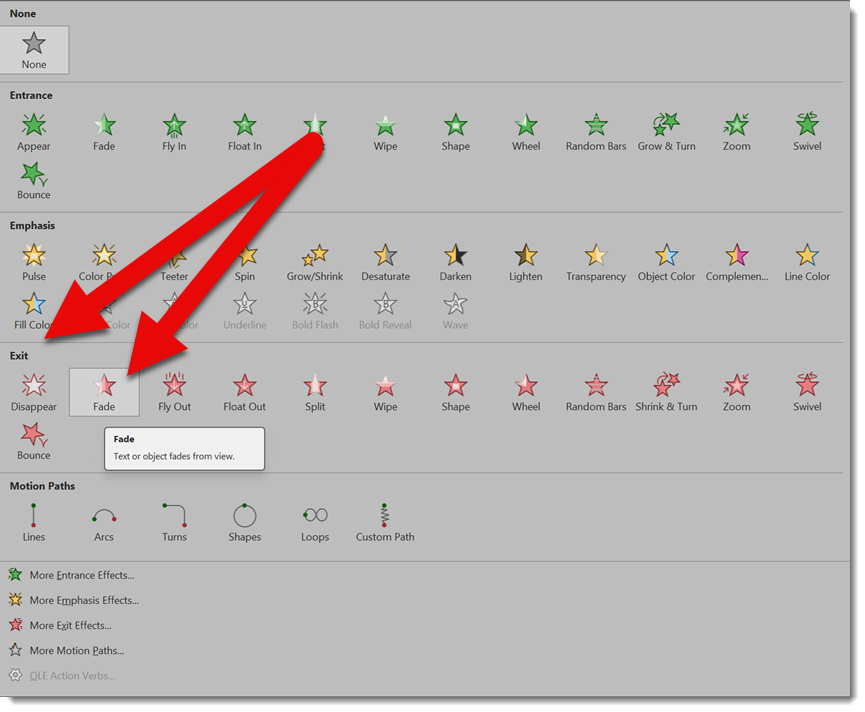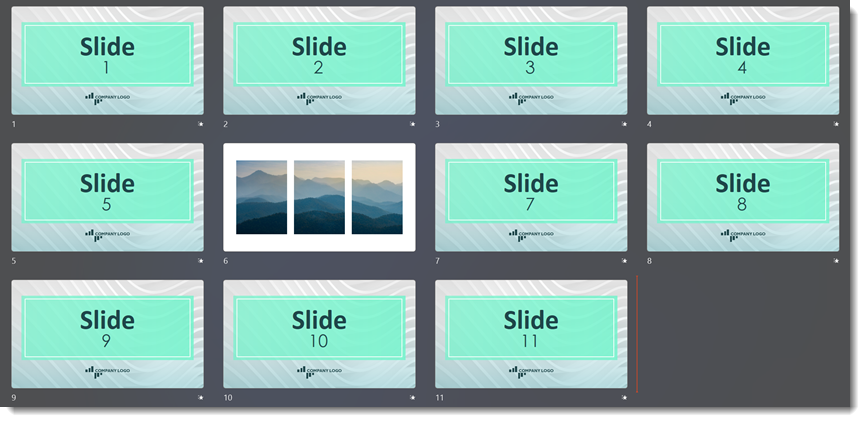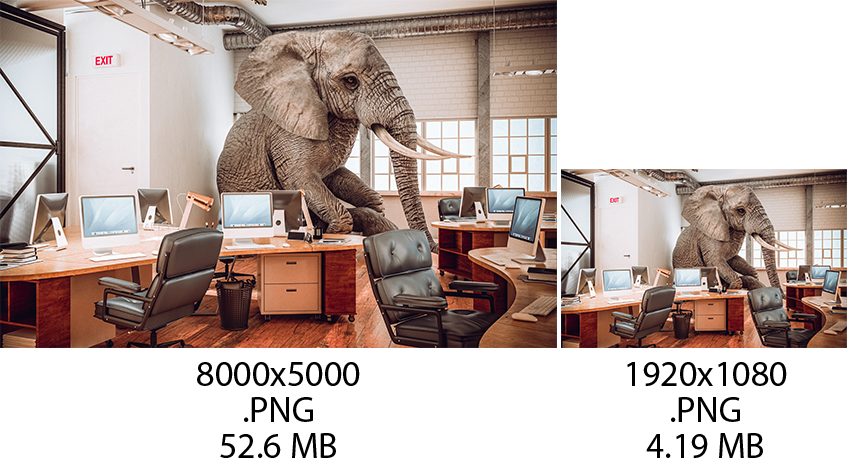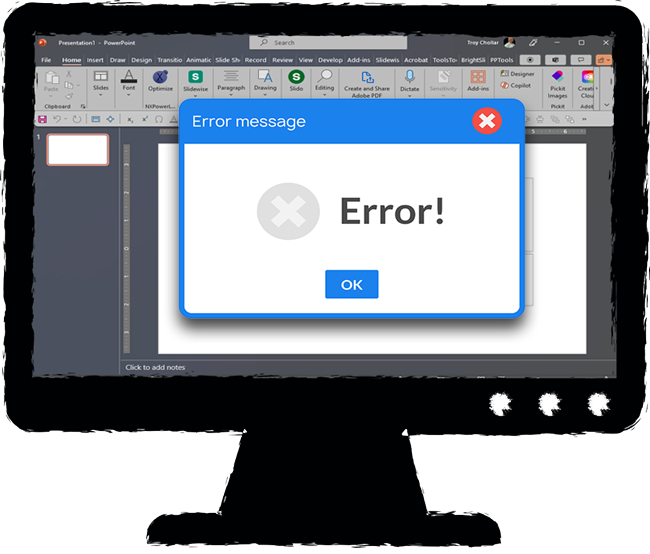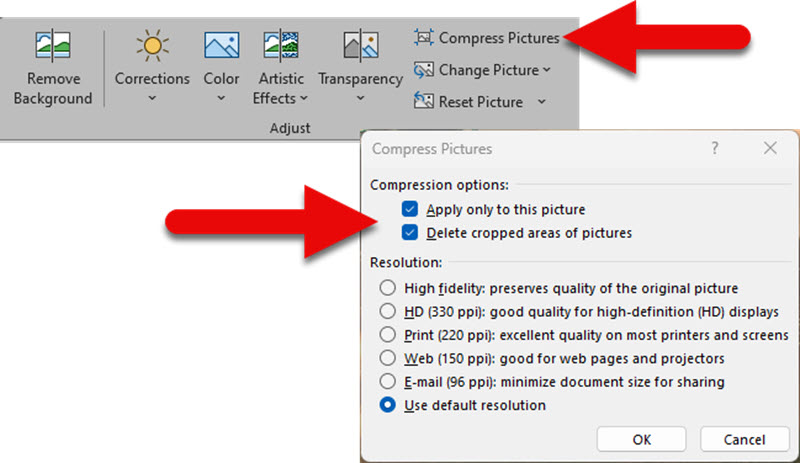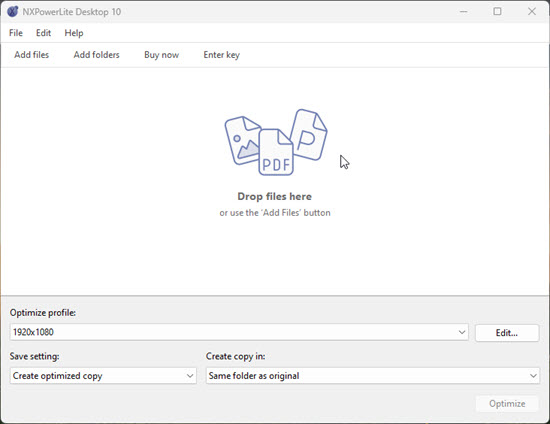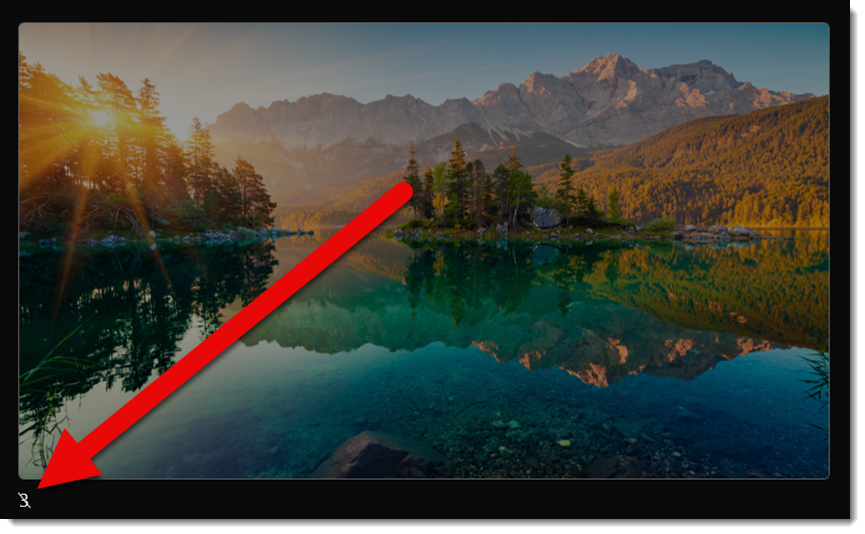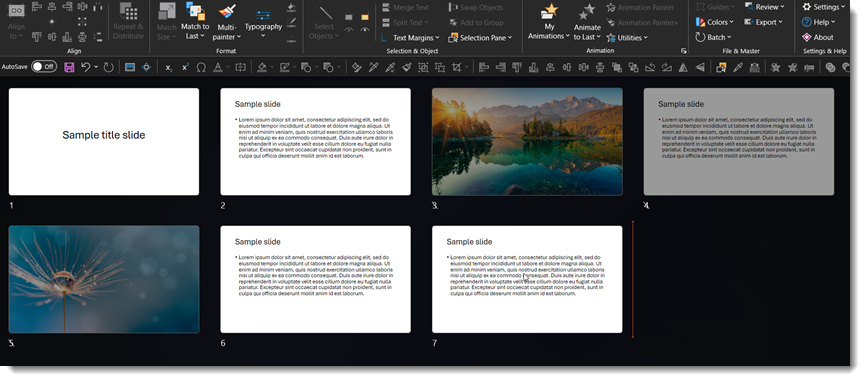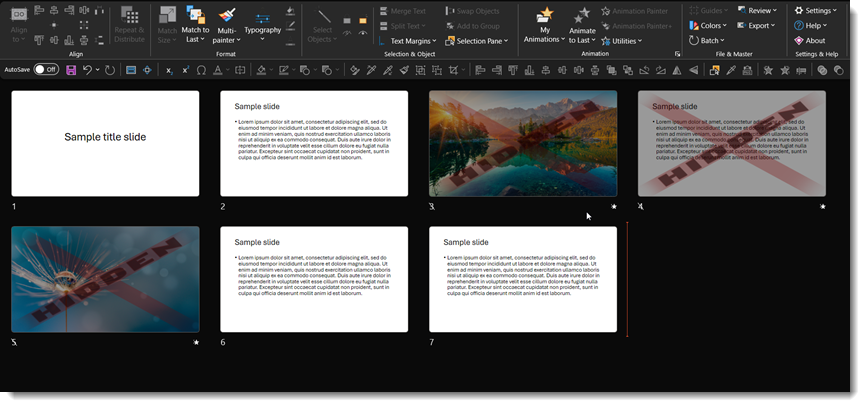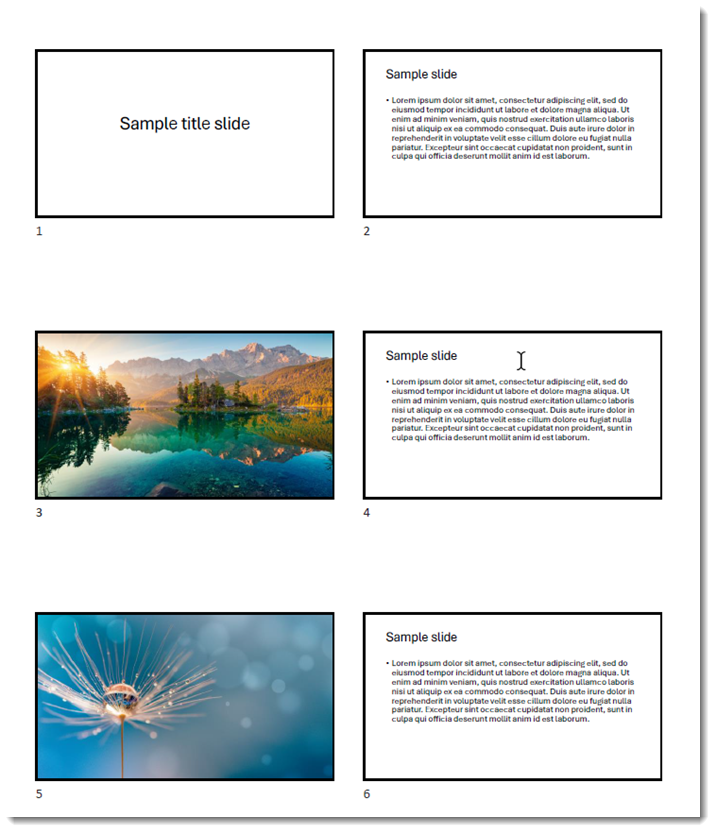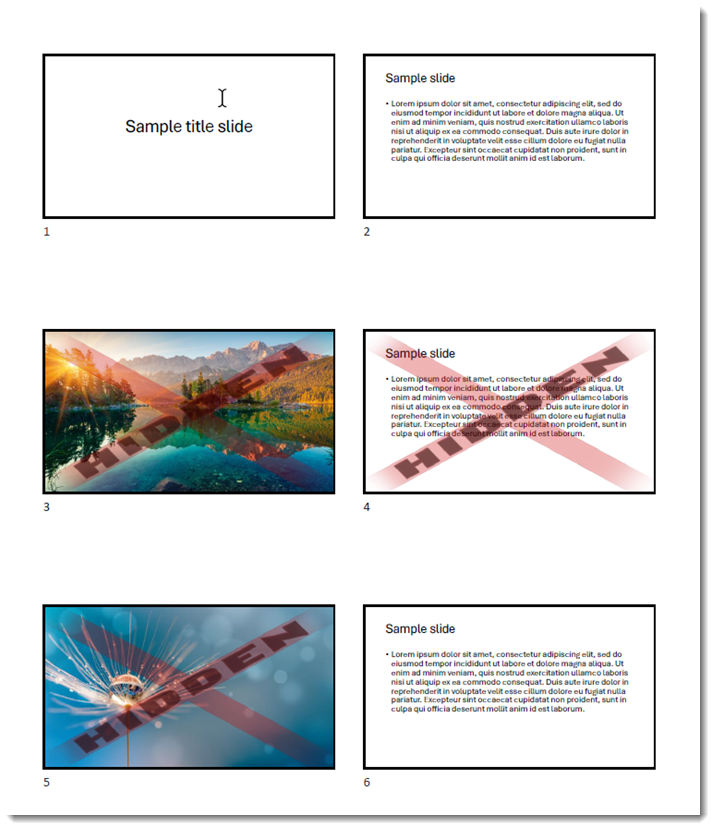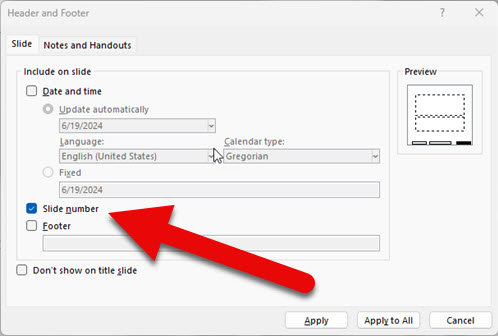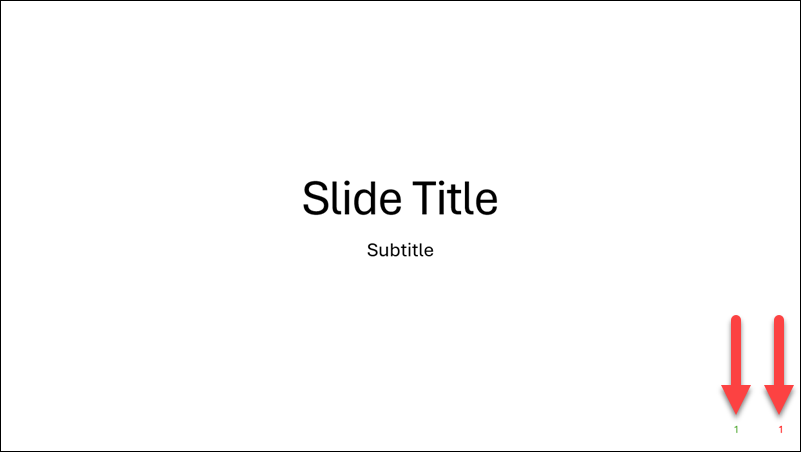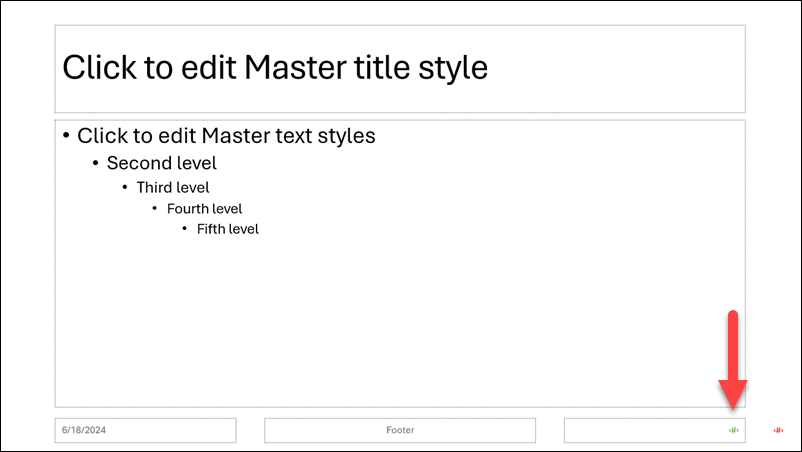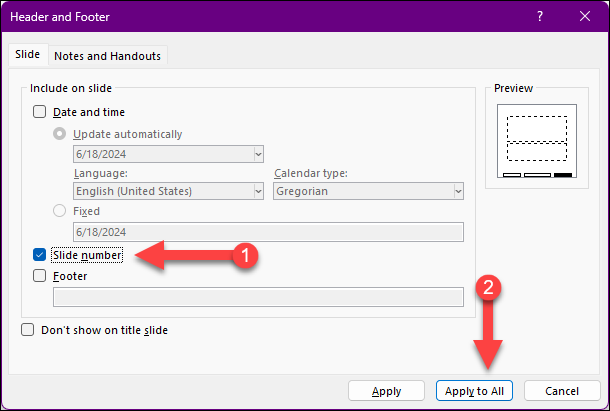#10. Behind-the-Scenes PowerPoint Issues
Microsoft PowerPoint templates are amazing. Among all the presentation software options, the PowerPoint template has the most options to preset and pre-configure slide content.

THE PROBLEM
There is one template customization that baffles us at TLC Creative when we see it – and we see it several times every year. Let’s set the stage. PowerPoint’s custom color scheme implementation is not perfect. But when set up correctly, it is a valuable tool in making slide design and edits faster. A custom color scheme assists in keeping slide content consistent and on-brand, quick and easy.
For example, default PowerPoint files start with the Microsoft provided default color scheme.

THE REAL PROBLEM
The ability to customize the color scheme for slide templates is wonderful. But for this “behind-the-scenes issue” I am going to focus on the left 4 colors. Let’s call them Light 1-2 and Dark 1-2.

For this behind-the-scenes issue, we are really focused on the White and Black colors in the Light and Dark preset values. Here is the deal, if there is NOT a true white and true black defined in these preset values, the formatting headaches are immense.

Unbeknownst to anyone who uses the Light/Dark for other colors, many of the features that make a PowerPoint template amazing become a huge issue when formatting slides if the template does not contain true white and true black.
WHERE WOULD THIS BE A PROBLEM?
- The Light and Dark preset colors are used in charts.

- The Light and Dark preset colors are used for the inserted text color.

- The Light and Dark preset colors directly impact the behind-the-scenes PowerPoint “Background Style” (most people are not familiar with this but change it, and suddenly slide colors do not work!).

- The Background Style determines the overall master template background color. This is because it simultaneously adjusts the font colors to either white on a dark background or black on a white background. If white and black are removed from the color scheme this will cause an issue in master font contrast legibility.

- Because the background style uses the Light/Dark colors, it is easy – and frustrating – to create a template that does not have enough contrast between the background and the text.

- Charts in Microsoft PowerPoint use the Light/Dark colors for axis labels, grid lines, legends and chart title text. There is no option to program PowerPoint to use other colors. Without black and white in the template preset colors, inserted charts are generally barely legible, and require lots of customization to make them work.

THE SOLUTION
This problem is not a problem if every Microsoft PowerPoint template keeps a true black and true white in the custom color scheme (in the Light/Dark presets). The solution is: don’t create a problem by removing what is already there. (Please note that all of the slide examples above are poor examples!)
CONCLUSION
Creating a PowerPoint template that does not have a true white and a true black in the Light/Dark color scheme colors definitely creates a behind-the-scenes formatting issue. This is the final post in this series on “Behind-the-Scenes PowerPoint Issues.” Everyone on the TLC Creative presentation design team hopes these 10 posts are helpful, educational, and ultimately let us see fewer of these issues and formatting frustrations.
~ Thanks to Christie on TLC Creative design team for highlighting this behind-the-scenes issue

















